Air
of Authority - A History of RAF Organisation
No 126 - 130 Squadron Histories
No 126
(Persian Gulf) Squadron
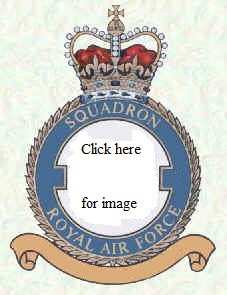 |
Originally
intended to be a day bomber unit, it formed on 1 March 1918 at Old Sarum.
Equipped with DH9s, its aircraft and crews were needed to provide reinforcements for units on the Western Front and it disbanded on17 August
1918. As the Axis onslaught on Malta gathered momentum, the need for enlarged
air defence grew and on 28 June 1941, 126 re-entered the Order of Battle
when a flight of No 46 Squadron, en-route for the Middle East was re-directed
and given the the number. Equipped with Hurricanes it was mainly concerned
with defence of the island and attacks against naval targets such as E-boats.
However, in October the squadron began to carry out attacks against Axis targets
in Siciliy although its main purpose remained air defence of Malta.
Spitfires arrived in March 1942 and continued operations in the same vein.
In September 1943, the squadron moved forward into Sicily and later onto the
Italian Mainland, but on 1 April 1944, it departed the Mediterranean theatre and
headed to the UK. Back in Britain, the squadron was again equipped with
Spitfires, which it flew from May on shipping patrols and Rhubarbs.
Another change occurred in December when the squadron re-equipped with Mustangs
and with these it undertook bomber escort missions to aircraft of Bomber
Command, who were now able to undertake daylight operations. It also
undertook long range anti shipping sweeps from May but these were short-lived as
the war in Europe ended on the 8th. From February 1946 the squadron began
to revert to Spitfires, but the following month (10th) it disbanded for
the last at Hethel. |
Squadron Codes used: -
| UN
|
Allocated April - September 1939 |
| V |
Jun 1942 - Dec 1942 |
| MK
|
Dec 1942 -Mar 1943 |
| 5J |
Apr 1944 - Apr 1946 |
[Aircraft & Markings |
Commanding Officers]
No 127 Squadron
 |
Like
126, No 127 was formed in day bomber role on 1 January 1918, this time at
Catterick, but before becoming operational, it disbanded on 4 July 1918. The
squadron reformed in Iraq on 29 June 1941 when a detachment of four Hurricanes
and four Gladiators was given the numberplate at Haditha. It carried out
fighter and reconnaissance operations during the invasion of Syria in July 1941
but was re-numbered as No 261 Squadron on the 12th of that month.
The squadron reformed once again, this at Kasfareet in Egypt, on
2 August 1941. However, it was composed entirely of ground personnel from
No 249 Squadron as it continued to act as a ground servicing unit until March
1942, when it eventually recieved Hurricanes. It initially operated in the
Western Desert from June, but moved back to Egypt in September for air defence.
During 1943 it moved westwards as the fighting in the desert
progressed, it operated detachments from Cyprus and covered actions in the
Aegean during November, but in April 1944, the squadron moved to Britain in
preparation for Operation Overlord. Arriving at North Weald on
23April, it was equipped with Spitfire IXs, beginning operations in May. A
move to the continent came in August 1944, where it remained until disbanding at
Twente on 30 April 1945.
Its final incarnation started on 11 January 1956 when it was
reformed as No 127 (Shadow) Squadron within No 229 OCU at Chivenor. It was
now in the weapons training role equipped with Hunters, but on 1 November 1958,
its 'shadow' status was transferred to No 234 Squadron. |
Squadron Codes used: -
| HF
|
Allocated Apr 1939 - Sep 1939 |
| EJ
|
Jun 1942 - Jan 1943 |
| 9N |
Apr 1944 - Apr 1945 |
[Aircraft & Markings |
Commanding Officers]
[Personal tribute
website]
No 128 Squadron
 |
Originally
formed on 1 February 1918 as a day bomber squadron at Thetford, like many others
at that time it failed to become operational and disbanded on 4 July 1918. In
Sierra Leone in West Africa, a flight of Hurricanes had been attached to No 95
Squadron to provide air defence and it was this flight that was raised to
squadron status as No 128 on 7 October 1941. However, following the
invasion of North Africa and the French Air Force in Dakar coming over to the
Allies, the need for air defences in the region diminished and the Squadron
disbanded on 8 March 1943. The squadron numberplate was revived
on 5 September 1944 at Wyton in No 8 Group. It operated Mosquitoes as part
of the Light Night Striking Force for the remainder of the war. With the
disbandment of No 8 Group, the squadron was transferred to No 2 Group on 20
September 1945. Allocated to No 139 Wing, it was initially stationed at
Melsbroek in Belgium but moved Wahn in Germany on 7 Mar 1946, where it
disbanded by being re-numbered No 14 Squadron on 31 March 1946. |
Squadron Codes used: -
| DQ
|
Allocated Apr 1939 - Sep 1939 |
| WG
|
Oct 1941 - Mar 1943 |
| M5 |
Sep 1944 - Mar 1946 |
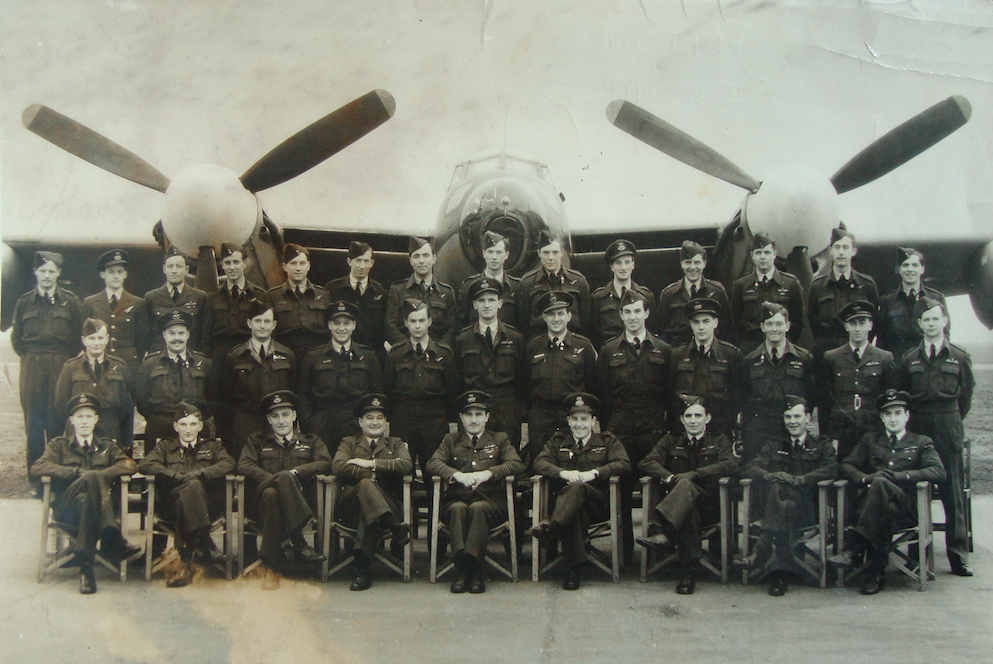 |
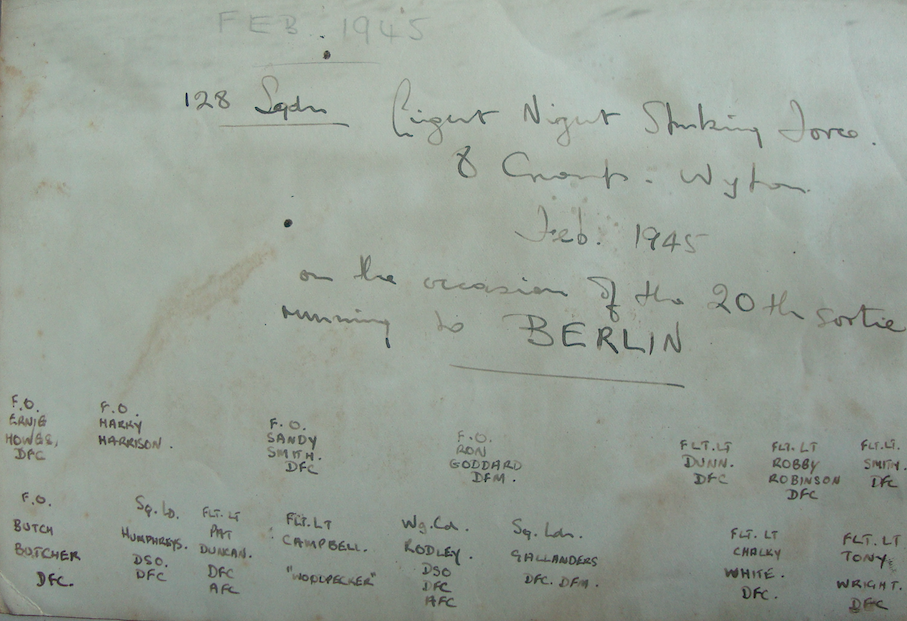 |
| No 128 Squadron - RAF Wyton -
February 1945 Photos courtesy Russ Gray |
[Aircraft & Markings |
Commanding Officers]
No 129 (Mysore)
Squadron
 |
Planned as day bomber squadron to be equipped with DH9s, it formed at Duxford
on 1 March 1918 but disbanded on 4 July 1918. It was reformed on
16 June 1941 as a fighter squadron at Leconfield, becoming operational in July
and moving south in August. Here it took part in the normal round of
offensive sweeps and escort missions. From September 1942 until February
1943, the squadron moved north to defend the Orkneys The squadron
was allocated to 2 TAF in June 1943 and in April 1944 began re-equipping with
Mustangs. Having supported the operations in Normandy the squadron was
placed on 'Anti-Diver' patrols from July to September after which it was
re-located to East Anglia from where it was able to provide long range escort
protection to daylight raids carried out by Bomber Command. With the end
of hostilities in Europe it move to Norway in June returning to the UK in
November. It spent its last few months of existence moving around
Yorkshire, Lincolnshire and Germany before being disbanded by being re-numbered
as 257 Squadron at Church Fenton on 1 September1946.
The squadron has so far had more further period of life, when No
233 OCU at Pembrey was given the 129 numberplate as a 'shadow' designation on 11
Jan 1956. Equipped with Hunter F Mk 1s the squadron was disbanded again on
1 September 1957.
|
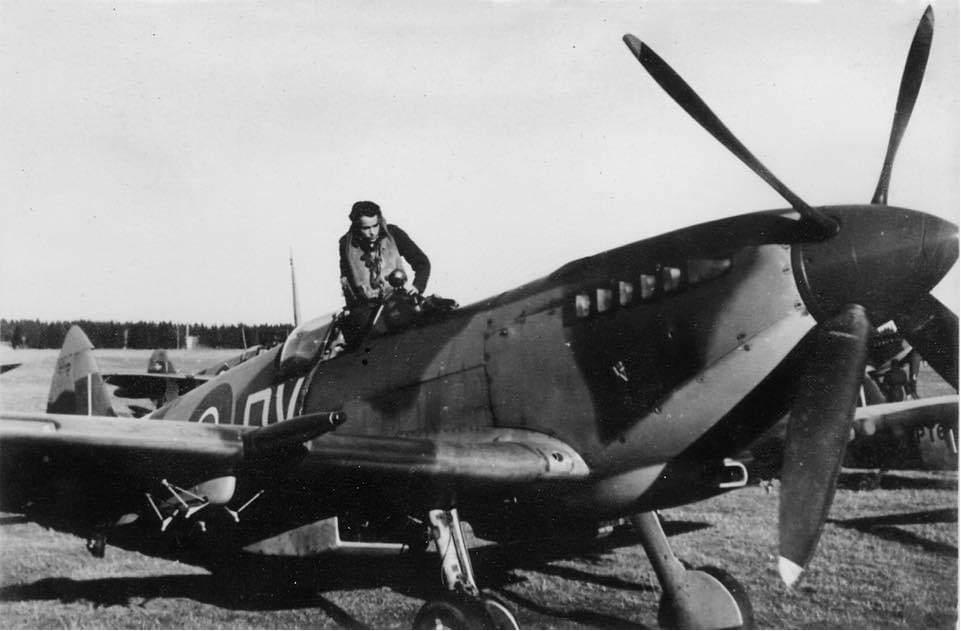 |
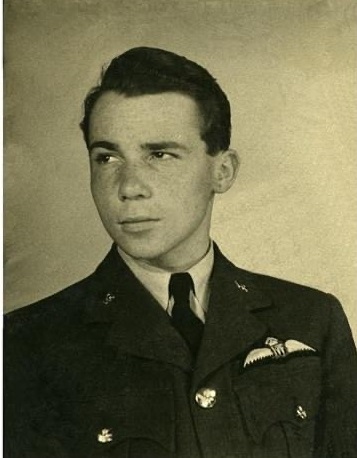 |
| Peter Anthony Nicholson of No 129
Squadron Photos courtesy of his grand-daughter, Nikita Nicholson |
Squadron Codes used: -
| SS |
Allocated Apr 1939 - Sep1939 |
| DV |
Jun 1941 - Sep 1946 |
[Aircraft & Markings |
Commanding Officers]
Flt Lt J Whelan website
No 130
(Punjab) Squadron
 |
As
with so many other squadrons at the time, it was formed as a day bomber unit to
be equipped with DH9s but the increased casualty rates caused by the German
March Offensive meant that its formation had to be cancelled and its crews
posted to France as replacements, its existence lasting from 1 March to 4 July
1918.
It reformed as a fighter squadron in 10 Group on 20 June 1941 at
Portreath equipped with Spitfires. Until March 1943 it operated in the air
defence role of Cornwall and Devon as well as carrying out sweeps over
North-West France. A move north took place in March to Scotland and then
across to Northern Ireland in April before returning to operations in the south
again in July. Further moves took place to Catterick, Scorton, and
Acklington before it finally disbanded at Scorton on 13 February 1944.
130 resurfaced again on 5 April 1944 when the numberplate was
given to No 186 Squadron at Lympne. Operating as part of 2 TAF it carried
out sweeps over Northern France in preparation of D-Day. Two months after
D-Day the squadron re-equipped with the Griffon engined Spitfire XIV, which it
immediately put to good use in countering the V1 menace then ravaging
Britain. September 1944 saw the squadron move to Holland to carry out
fighter reconnaissance sweeps and to combat the jet powered Me262, then
appearing over the battlefield.
With the end of the war 130 took over the Spitfire IXs of No 411
Squadron, which it took back to Scotland in preparation for a move to
Norway. This happened on 20 June, the squadron staying there until
November when it returned to the UK. It took up its permanent base at
Odiham in Hampshire in July 1946 where it converted to Vampire F Mk 1s in
October, but on 1 February 1947 the squadron re-numbered No 72 Squadron.
No 130 rejoined the Order of Battle on 1 August 1953 when it
reformed as a fighter squadron in No 135 Wing at Bruggen equipped with the
Canadair Sabre F Mk 4, although some Vampires may have been operated
initially. These were replaced by Hunter F Mk 4s in April 1956 but on 31
May 1957 the squadron disbanded yet again. 130 has had one further brief
period of existence when it was reformed at Polebrook on 1 Dec
|
|
1959 as a Thor Intermediate Range Ballistic Missile unit, finally
disbanding on 23 August 1963. |
Squadron Codes used: -
| TX
|
Allocated April - September 1939 |
| PJ |
1941 - Feb 1944 |
| AP |
Apr 1944 - 1947 (Codes taken over from No 186 Sqn) |
[Aircraft & Markings |
Commanding Officers]
Squadron badge image on this page is courtesy of Steve
Clements
© Crown Copyright is reproduced with the permission of the Directorate of
Intellectual Property Rights
This entry was last updated on
27/05/25©
 Organisational Index
[Top of
Page]
Sqns 131 - 135
Organisational Index
[Top of
Page]
Sqns 131 - 135





![]() Organisational Index
Organisational Index ![]()